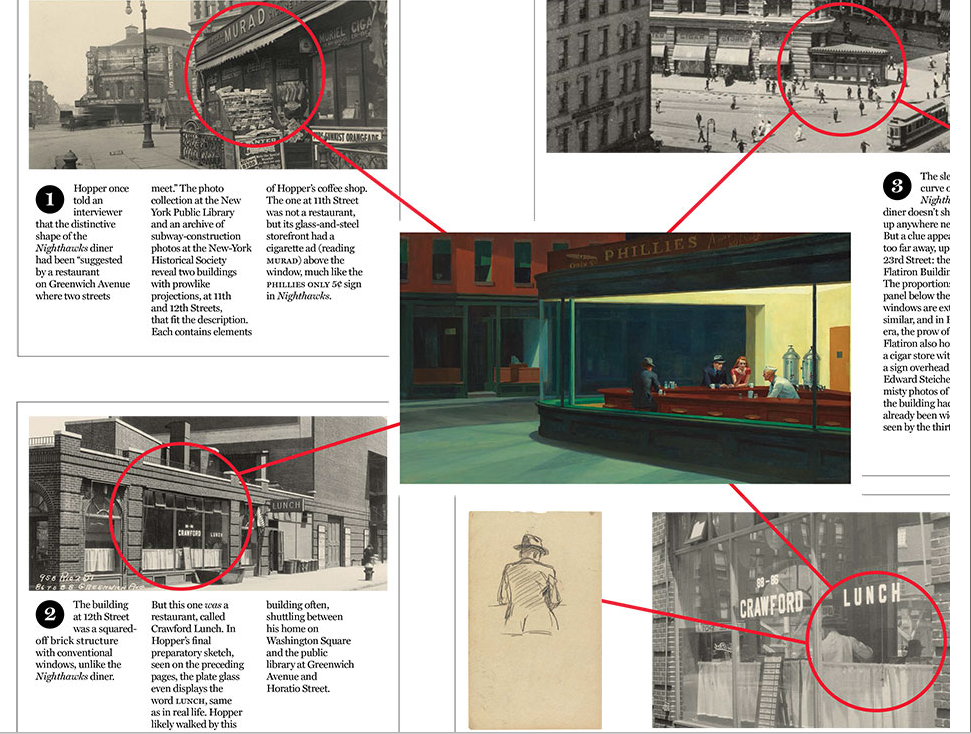Edward Hopper: A Walking Tour
"But what’s always interesting in Hopper is that there is always extreme specificity and generalization almost at the same time, and I think that’s what makes...that’s what gives his art that kind of uncanny quality that he’s famous for." —Carter Foster, Curator of Hopper Drawing, Whitney Museum of American Art
Curator Carter Foster takes us on a tour of the neighborhood where Edward Hopper lived and worked from 1913-1967. The video compares present-day New York City with photographs from Hopper’s era, reaching as far back to the 1920s. The short video, Edward Hopper's New York: A Walking Tour (5:02), features likely sources of inspiration for paintings such as Early Morning Sunday (shown above) and Nighthawks.
What's clear from Foster's portrayal of the various locations is that Hopper's paintings are a curation of the world around him. The record of what Hopper would have seen and how he chose to paint such images reveal Hopper as a master of visual ellipsis. Foster attributes this to Hopper's skill as synthesizer:
I think that the important thing to understand about Hopper was that he was a synthesizer. We’ve seen all these spots that inspire his painting, but it’s important to know...to realize that Hopper went back to his studio once he made drawings on site or was inspired by these specific spots and amalgamated the information while he was painting it. But what’s always interesting in Hopper is that there is always extreme specificity and generalization almost at the same time, and I think that’s what makes...that’s what gives his art that kind of uncanny quality that he’s famous for. You have to understand how much he was out in NYC looking at things very carefully in order to be able to paint them in his kind of signature style when he went back to his studio in Washington Square.
As such, we see a painter whose skills of observation merge with imagination. For an in-depth look into Hopper's methods of study and preparation for paintings, check out Edward Hopper: Precision Through Process.
For a photographic tour of the locations mentioned in Edward Hopper's New York: A Walking Tour see below:
An accompaniment to Foster's mapping of real-life inspirations for Nighthawks. Click here to enlarge the image via New York Magazine.
Entrance to Hopper's apartment and studio (now an office space owned by New York University; tours available by appointment only):
For those interested in audio recordings on Hopper and his work, visit The Art Institute of Chicago's resource page.
*Frontispiece
Edward Hopper (1930), Early Sunday Morning, oil on canvas, 35 3/16 × 60 1/4 in. Whitney Museum of American Art, New York.






